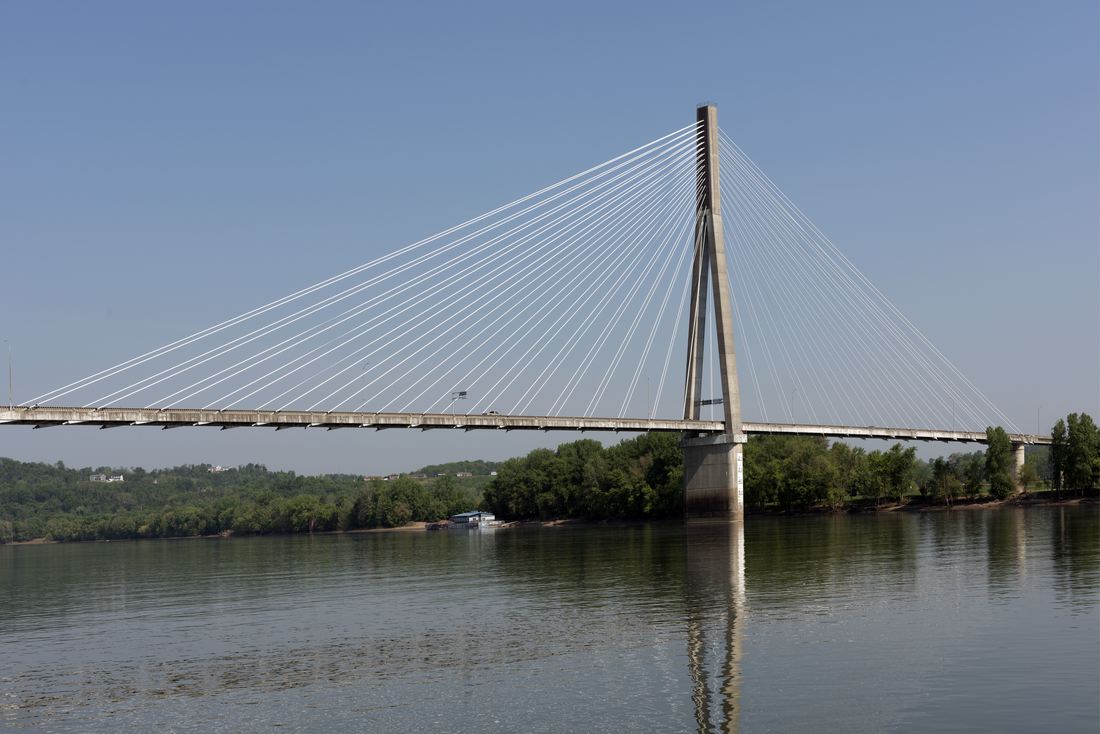Constituent letters soon began flooding the senator’s office and on December 14, 1977, a petition bearing almost 2,000 signatures collected by the Huntington Area Women’s Interclub Council arrived on Senator Byrd’s desk. In replies to the letters from concerned residents, Senator Byrd assured that the he was working with the governor, the state Department of Highways, and the Federal Highway Administration to identify funding sources to replace the Sixth Street Bridge.
Senator Byrd wrote a letter to Karl Bowers, Administrator of the Federal Highway Administration on January 16, 1979, urging him to allocate funds for the Huntington project. Within a month, he received a reply from the administration announcing that $27 million dollars was set aside for the construction of a new bridge. Over the next four years, studies were conducted and a site on the northeastern side of Huntington was selected for the new span. A design from Arvid Grant and Associates was approved and work commenced in 1983 on the new cable-stayed bridge, the first of its kind in West Virginia (and one of two which span the Ohio River in the state today). The 1,508 foot span, supported by 31 pairs of cables suspended from a 280 foot tower was completed in 1985. A year later, the bridge was honored with the Federal Highway Administration’s Award for Design Excellence. Even after the new span was opened, the Sixth Street Bridge remained in service. Finally, in 1994, another new span, carrying four-lanes of traffic across the Ohio River opened, named in honor of Senator Byrd who spearheaded the securing of appropriations to fund the project. The old Sixth Street Bridge was demolished in 1995.
Comments are closed.
|
Welcome to the Byrd Center Blog! We share content here including research from our archival collections, articles from our director, and information on upcoming events.
Categories
All
Archives
July 2023
|
Our Mission: |
The Byrd Center advances representative democracy by promoting a better understanding of the United States Congress and the Constitution through programs and research that engage citizens.
|
Copyright © Robert C. Byrd Center for Congressional History and Education
|




 RSS Feed
RSS Feed
